
Apparatus ideas BOB VACCARO
As the price of new fire apparatus has begun to skyrocket across the United States no matter what manufacturer you purchase from, a large number of fire departments have looked into refurbishing existing apparatus.
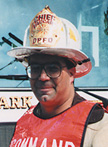
Depending on your budget, the fire apparatus refurbishment process may involve removing the compartment body of the fire apparatus from the chassis after inspecting for rust and then mounting it to a new cab and chassis. In the case of the Loveland-Symmes (OH) Fire Department (LSFD), it also involved removing a rescue crane from the chassis. The body is fitted to a new chassis and upgrades are made to the wiring, lighting, and almost all other components of the fire apparatus.
Before the whole process begins, departments need to investigate the costs to determine if all the necessary work is feasible and how much time will be gain in longevity by refurbishing an existing piece of apparatus.
The LSFD currently operates as a private fire company, governed by the LSFD board of directors that contracts fire and EMS services to Loveland and Symmes Township as well as Miami Township. It operates four fire stations (two in Loveland and two in Symmes Township) that are staffed with firefighters and paramedics 24/7 year-round. It provides protection for 28,000 residents in all three areas mentioned. The area is 15 miles north of the city of Cincinnati and has several major highways, numerous schools, strip shopping areas, and a downtown historic district in its response area.
LSFD Captain Mitch Caito was given the task of designing a new rescue apparatus. “The price of designing a brand-new rescue apparatus was just too overwhelming for our department as far as the cost involved at the time we looked into the process,” Caito says. “We really thought we could get more for our money by choosing to go with a refurb of our existing vehicle, which was still in relatively good condition.”
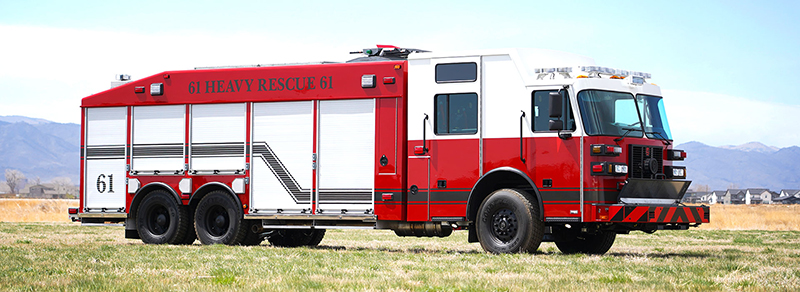
1 The Loveland-Symmes (OH) Fire Department’s heavy rescue is built on a Sutphen cab and chassis with an SVI body. (Photos courtesy of SVI.)
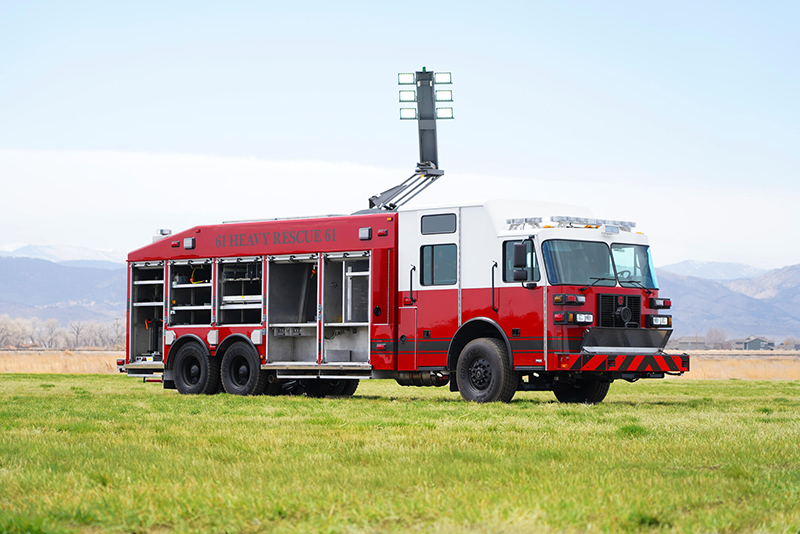
2 The officer’s side large compartments with light tower raised.
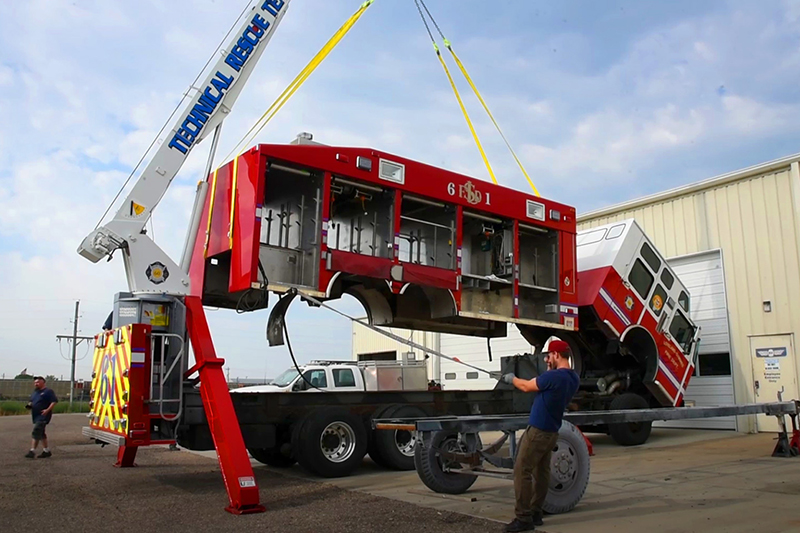
3 The body was removed by using the existing crane mounted to the apparatus.
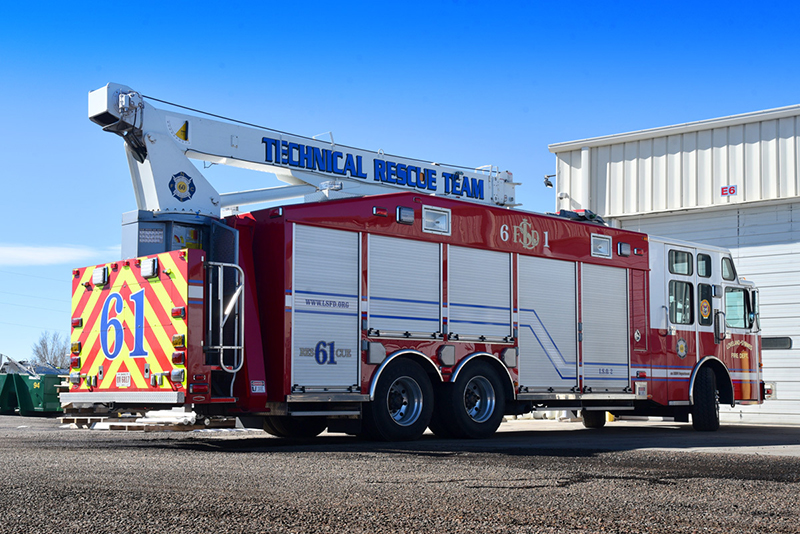
4 Before photos of the existing truck with the crane installed.
Loveland-Symmes Fire Department Heavy Rescue Refurb
|
He adds the department knew the rescue crane on the back of the old rescue had to go for operational reasons. “By removing it, we gained added compartment space and reduced the overall weight of the rig,” he says. “We also decided to go with a new Sutphen cab and chassis.”
The new Sutphen cab and chassis afforded the firefighters a great deal more space and removing the crane, which had been used for structural collapse incidents and rollover crashes, afforded more cabinet space, he says, noting that allowed the department to carry struts with more capacity as well as more technical rescue equipment, he says. The new truck also has more receiver points for winch operations, he adds. “This, we felt, made us operationally better for multiple types of emergency scenes.”
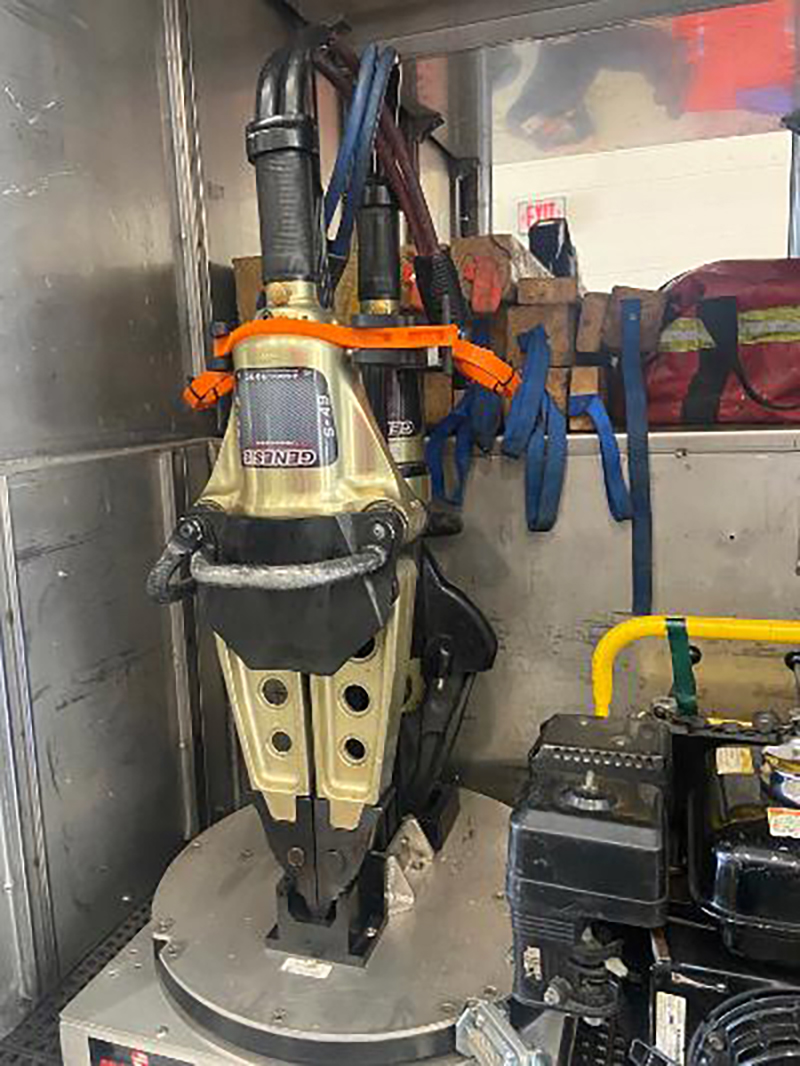
5 Genesis rescue tool compartment.

6 The saw compartment.
Loveland-Symmes Fire Department Profile
|
“We began planning for the new rescue for the past two years,” Caito says. He adds it was an easy choice to go with the Sutphen cab and chassis. “We have had a great working relationship with them for the past 30 years,” he says, noting the LSFD has purchased many apparatus from Sutphen, which is only 30 minutes north of the station.
That proximity in central Ohio made it easier for LSFD firefighters to inspect the new cab and chassis before it was sent to SVI in Colorado for completion of the refurbishing. Caito says SVI had the plans for the original truck on file and the department was familiar with the company’s work, as SVI had built other vehicles for the department in the past.
In addition to a larger cab and more compartment space, the department was able to get new and larger Paratech struts and all new battery-powered extrication tools, including spreaders and cutters.
“The extrication tools were installed on both sides of the truck to make it easier for our firefighters to operate on the large number of highway incidents we have in our response district,” Caito says. “Also installed was a Command Light tower for better scene lighting while operating at various fireground and accident scenes. Overall, I think we covered all the bases with the new design. In the long run, we feel that it will last us far into the future.”
The LSFD took a proactive approach in designing a new heavy rescue. Firefighters looked into the cost of purchasing new vs. refurbing their older vehicle. In the long run, they chose to refurb, making a great deal of changes for the better in the design for their firefighters and overall operational capability of the new vehicle in their response district.
Based on larger compartment space, rescue tool additions, and winch capability, the new vehicle should provide them with greater use and longevity well into the future for all types of rescue operations.
BOB VACCARO has more than 40 years of fire service experience. He is a former chief of the Deer Park (NY) Fire Department. Vaccaro has also worked for the Insurance Services Office, the New York Fire Patrol, and several major commercial insurance companies as a senior loss-control consultant. He is a life member of the IAFC.

